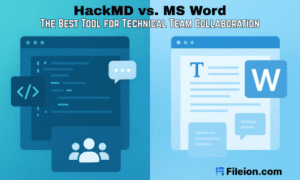In a world driven by rapid technological advancement, the way we approach safety and compliance in building infrastructure is undergoing a seismic shift. Traditionally, electrical testing and compliance services relied heavily on manual inspections, basic diagnostic tools, and human expertise. While these methods have been effective, the stakes in modern residential and commercial properties have grown—demanding faster, smarter, and more reliable solutions.
Enter smart testing devices, powered by technologies such as the Internet of Things (IoT), Artificial Intelligence (AI), and advanced sensors. These innovations are revolutionizing the electrical compliance industry, enabling property owners and electrical professionals to ensure that buildings meet safety regulations, avoid hazards, and remain energy-efficient.
Let’s explore the future of electrical compliance and how these intelligent technologies are transforming building safety.
- IoT-Powered Devices: Real-Time Monitoring for Proactive Compliance
Internet of Things (IoT) technology is leading the way in enhancing building safety through continuous, real-time monitoring of electrical systems. By embedding smart sensors in electrical panels, outlets, and circuit breakers, property owners can receive instant alerts about overloads, faults, or abnormal usage patterns.
Unlike traditional inspections, which occur periodically, IoT-enabled systems work 24/7—providing insights that enable early detection of potential issues before they become serious problems. This real-time capability significantly reduces the risk of electrical fires, equipment failure, or regulatory violations.
For example, in commercial facilities, IoT platforms can monitor energy consumption trends across multiple locations and automatically trigger maintenance or inspections when anomalies are detected. This not only improves compliance but also boosts energy efficiency and reduces costs.
- AI and Predictive Analytics: Smarter Decisions, Safer Buildings
Artificial Intelligence (AI) is playing an increasingly critical role in optimizing electrical compliance. By analyzing data collected from smart devices, AI systems can identify patterns that signal potential hazards or inefficiencies.
AI-driven predictive analytics allows building managers to anticipate failures before they occur—helping them schedule maintenance at the right time, reduce downtime, and comply with electrical safety standards effortlessly. These systems can also recommend upgrades based on historical data and evolving compliance codes.
In residential settings, smart home electrical hubs equipped with AI can automatically shut off circuits when they detect unsafe conditions, protecting both occupants and property. The integration of AI not only enhances safety but streamlines compliance reporting and documentation for audits.
- Smart Sensors and Wireless Testing: Precision Meets Convenience
Smart sensors are making electrical testing more precise and less intrusive than ever. Wireless voltage testers, ground fault detectors, and insulation resistance meters can now communicate seamlessly with mobile apps and cloud-based dashboards.
Technicians can conduct comprehensive inspections without dismantling panels or disrupting operations—particularly useful in large-scale commercial settings where downtime is costly. These tools are also ideal for residential electricians who want fast diagnostics with pinpoint accuracy.
According to Nely Hayes, Marketing Manager at HEXO Electrical Testing, “The use of smart sensors and wireless testing equipment has significantly increased the speed and accuracy of compliance inspections. This not only ensures higher safety standards but also reduces disruption for property owners and tenants.”
Moreover, advanced sensors can track humidity, temperature, and vibration, giving context to electrical anomalies and enabling more accurate root cause analysis. These insights not only support compliance but also lead to better long-term safety outcomes.
- The Compliance Tech Ecosystem: Integrating Safety with Smart Building Systems
As buildings become smarter, electrical compliance is no longer a standalone function. Smart testing devices are now part of an interconnected ecosystem that includes fire alarms, HVAC systems, security infrastructure, and energy management platforms.
“Through centralized building management systems (BMS), electrical compliance data can be integrated with other building performance metrics—creating a holistic view of safety, sustainability, and operational efficiency,” says Brett Gelfand, Managing Partner at Cannabiz Credit Association
For example, in green buildings, compliance solutions are linked to solar panels, battery storage units, and EV charging stations to ensure safe and optimized energy usage. This integration is vital in meeting both local regulations and global sustainability standards such as LEED or ISO 50001.
Conclusion: A Safer, Smarter, and More Compliant Future
The future of electrical compliance is not just about checking boxes—it’s about building safer, smarter, and more responsive environments. With IoT, AI, and advanced sensors at the helm, property owners and electrical professionals now have powerful tools to proactively manage safety and compliance.
As regulations evolve and technology continues to advance, adopting these smart testing devices isn’t just a competitive advantage—it’s quickly becoming a necessity. Whether you’re managing a residential home or a sprawling commercial complex, investing in intelligent compliance solutions is the key to safer spaces and a more sustainable future.





























